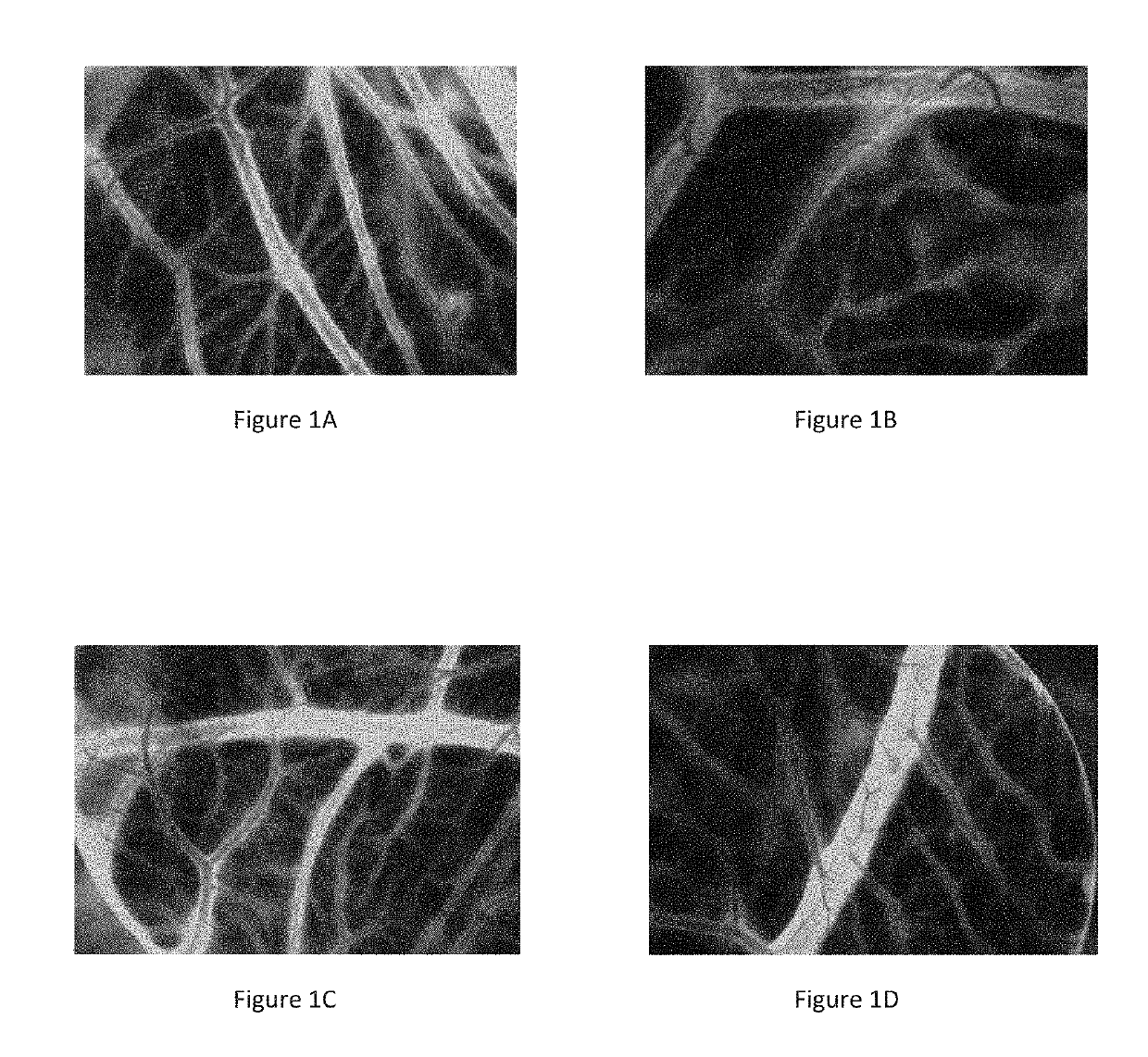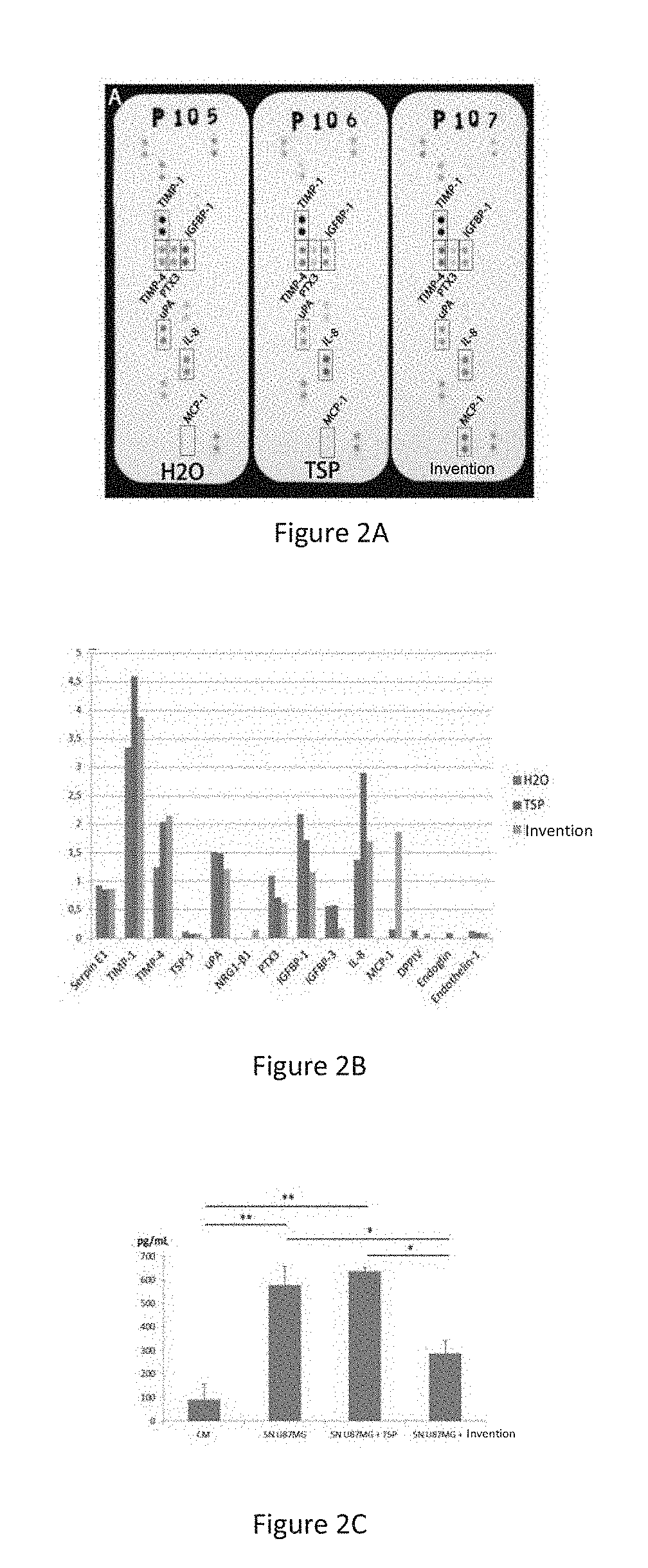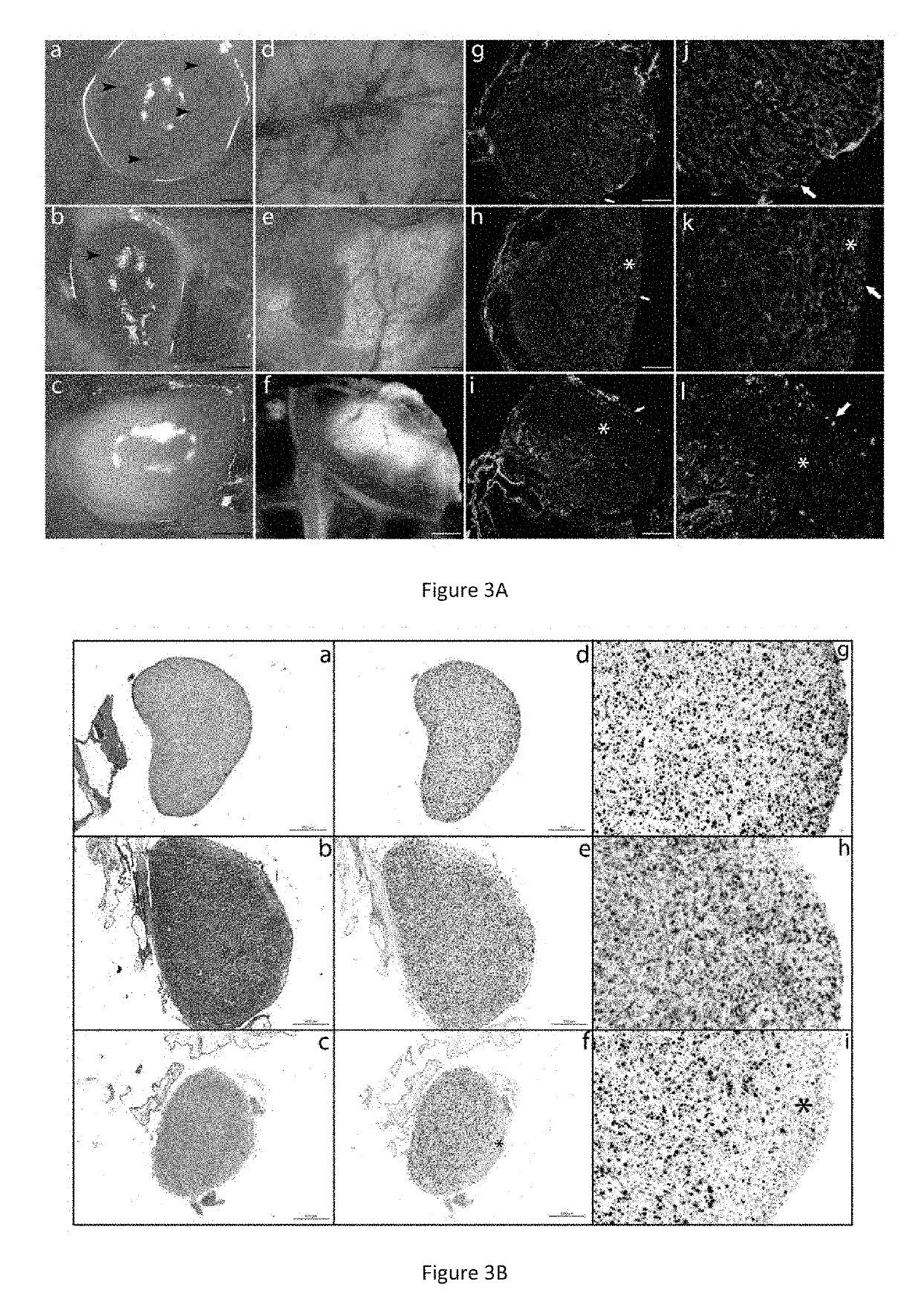Specific oligopeptides as Anti-angiogenic drugs
a specific oligopeptide and anti-angiogenic technology, applied in the field of specific oligopeptides, can solve the problems of ineffectiveness, complex and expensive manufacturing of existing anti-angiogenic molecules, and significant challenge in increasing the number of therapeutic options, and achieve the effect of no toxic side effects and improved safety
Inactive Publication Date: 2019-08-22
NEURONAX SA +1
View PDF0 Cites 0 Cited by
- Summary
- Abstract
- Description
- Claims
- Application Information
AI Technical Summary
Benefits of technology
The invention proposes a specific oligopeptide that has been found to be effective and tolerable in treating angiogenic diseases such as tumors. The oligopeptide plays a protective role in preventing the death of endothelial cells and inhibits their migration when induced by tumor cells. It also has improved safety as it shows no toxicity even at high doses. The technical effects of the invention are its ability to target specific mechanisms involved in angiogenic diseases and its potential to be a safer treatment option for glioblastoma tumors.
Problems solved by technology
However, although the VEGF is recognized as a significant regulating factor in tumor growth and although it constitutes a preferred target for anti-cancer treatments, the development of new angiogenesis-inhibiting agents represents a significant challenge for increasing the number of therapeutic options.
If some of the developed angiogenesis inhibitors currently show effects on the control of the growth of tumors in association with conventional chemotherapy, they are not, however, effective enough, in particular for the treatment of solid tumors in a general way and tumors of the central nervous system more specifically.
In addition, the existing anti-angiogenic molecules are synthetic proteins that are complex and expensive to manufacture.
These secondary effects, sometimes with a fatal outcome, encountered with Bevacizumab, are in particular a leukopenia at the origin of infections as well as a risk of hemorrhage.
Other ways of blocking the path of the VEGF (anti-VEGF antibodies, anti-VEGF-R, small PI3K blocking molecules, etc.) are furthermore being developed, but in the vast majority of cases, they have limitations in terms of effectiveness, specificity, and undesirable effects, with the latter able to apply to the cardiovascular system.
Method used
the structure of the environmentally friendly knitted fabric provided by the present invention; figure 2 Flow chart of the yarn wrapping machine for environmentally friendly knitted fabrics and storage devices; image 3 Is the parameter map of the yarn covering machine
View moreImage
Smart Image Click on the blue labels to locate them in the text.
Smart ImageViewing Examples
Examples
Experimental program
Comparison scheme
Effect test
example
—W—S-G-W—S—S—C—S—R—S—C-G- (SEQ ID NO: 5)
[0092]This oligopeptide that is the object of this invention corresponds to the 12 most commonly preserved amino acids that are obtained from the fourth TSR domain of the SCO-spondin.
the structure of the environmentally friendly knitted fabric provided by the present invention; figure 2 Flow chart of the yarn wrapping machine for environmentally friendly knitted fabrics and storage devices; image 3 Is the parameter map of the yarn covering machine
Login to View More PUM
| Property | Measurement | Unit |
|---|---|---|
| Fraction | aaaaa | aaaaa |
| Composition | aaaaa | aaaaa |
Login to View More
Abstract
An oligopeptide isolated from an SCO-spondin glycoprotein, characterized by the sequence: —W—S—X1—W—S— X2—C—S— X3—X4—C-G- (SEQ ID NO: 1), in which X1, X2, X3 and X4 represent amino acid sequences that consist of 1 to 5 amino acids. The oligopeptide may be used as a drug for inhibiting angiogenesis, in the treatment of diseases associated with angiogenesis in humans or animals, in particular against tumor angiogenesis. The oligopeptide is suitable in particular for the treatment of brain tumors.
Description
FIELD OF THE INVENTION[0001]This invention relates to a specific oligopeptide and its use as a medication in the treatment of diseases associated with angiogenesis in humans or animals, in particular as an anti-tumor agent.BACKGROUND OF THE INVENTION[0002]Angiogenesis is the mechanism that is responsible for the formation of new vessels from preexisting vessels. It is essential during certain physiological processes, in particular for the establishment of the vascular system in embryos and for the implanting of placentas, but it can also be responsible for pathological developments, such as rheumatoid arthritis, macular degeneration in adults, and primarily the growth of tumors and the development of metastases. It is actually well established that the development of an intratumoral or peritumoral vascularization is a key event for the growth of a tumor and for the metastatic dissemination by means of blood.[0003]This is why, for several years, research has been conducted on molecul...
Claims
the structure of the environmentally friendly knitted fabric provided by the present invention; figure 2 Flow chart of the yarn wrapping machine for environmentally friendly knitted fabrics and storage devices; image 3 Is the parameter map of the yarn covering machine
Login to View More Application Information
Patent Timeline
 Login to View More
Login to View More IPC IPC(8): A61K38/17A61P35/00A61K45/06
CPCA61K38/1709A61P35/00A61K45/06A61K38/10A61P17/02A61P19/02A61P27/00A61P27/02A61P27/06A61P29/00A61P9/10
Inventor GOBRON, STEPHANELALLOUE, FABRICEBIBES, ROMAINVINCENT, FRANCOIS
Owner NEURONAX SA
Features
- R&D
- Intellectual Property
- Life Sciences
- Materials
- Tech Scout
Why Patsnap Eureka
- Unparalleled Data Quality
- Higher Quality Content
- 60% Fewer Hallucinations
Social media
Patsnap Eureka Blog
Learn More Browse by: Latest US Patents, China's latest patents, Technical Efficacy Thesaurus, Application Domain, Technology Topic, Popular Technical Reports.
© 2025 PatSnap. All rights reserved.Legal|Privacy policy|Modern Slavery Act Transparency Statement|Sitemap|About US| Contact US: help@patsnap.com



